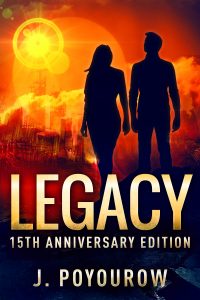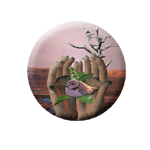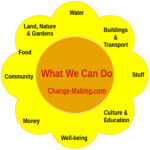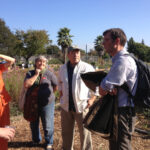Legacy: A Story of Hope
 An epic saga that spans generations, the “Gone With the Wind” for the fossil-fuels era.
An epic saga that spans generations, the “Gone With the Wind” for the fossil-fuels era.
Tia Chandler meets Ari Damek, a guy like none she has ever met. He’s full of grand dreams, talks big plans, and he has a way of bringing others along with him.
It’s a lifelong romance, as well as a decade-hopping story about what it means to be a change-maker. From local Los Angeles issues to national policies and international treaties, Ari seems determined to influence it all.
Experience the transformation as the city of Los Angeles — and the broader American society — evolve to greener, earth-wiser ways. Rather than a leap into the future, this is a story about creating the transition.
- Get the Paperback edition now
- Anniversary edition ebook coming in 2020.
Winner of the LiFE Award

Literature for the Environment (Australia)
Extras:
- Permaculture flower diagram that Tia mentions
- International meetings that Ari mentions
- List of Presidents during Ari’s time
- Lauren’s children’s book list
- “Jana’s garden books”
FAQs:
Where do I find other people who understand this stuff? I want a “LegacyLA” group in my neighborhood!
(article coming soon. In the interim, look up the international Transition Movement and Permaculture. See also Rob Hopkins’ Transition Handbook and Poyourow & Rood’s Environmental Change-Making)
Do you offer book club questions to accompany Legacy?
Yes. You can download them here. (link coming soon)
What age group is Legacy intended for? Can I give it to my high schooler?
I wrote Legacy for adult readers. While the novel doesn’t include graphic content (intimate scenes are sensual/closed-door), the storyline is far more complex than YA stories tend to be.
If you were writing Legacy today, what might you change?
I have written about this in the [forward] to the 2020 ebook edition. You can download that [forward] here. (link coming soon)
How is the 2020 edition different?
The 2020 ebook version includes a [forward and afterword] which gives a sense of where we are (nonfiction) on the timeline (fiction) toward the cultural transformation Ari dreamed about. If you have a copy of the 2005 paperback and want to see the latest version of this [forward], you can download it here. (link coming soon)
The 2005 edition included a copy of David Holmgren’s Permaculture Flower — the detailed diagram that he was using at that point in time. Since that time, Holmgren has developed a sleek contemporary version of the flower, together with a website to explain it. Put that together with the fact that diagrams do not convert well on different ebook readers, and I decided to omit the diagram from the 2020 ebook.
Several poems and quotations from the original version were omitted in the 2020 ebook. This was because of issues with publisher reprinting permissions.
The 2005 edition included 24 pages of endnotes, kind of like a nonfiction textbook. In those days, I felt I needed to prove to readers that this stuff was real, that it was happening, someplace in the world. Fast forward to today, and these types of things pop up in mainstream media. My old list of endnotes contained a lot of ancient hyperlinks. I decided not to update it, simply omit it. If you are looking for this kind of proof of content, you can find the old version on Google Books.
Can I get a copy of the 2005 edition electronically?
Someone uploaded the text of the 2005 edition, including the original Chapter 11 and endnotes, onto Google Books. True, that isn’t the easiest platform to read a whole novel — that’s why I created the 2020 ebook edition.


